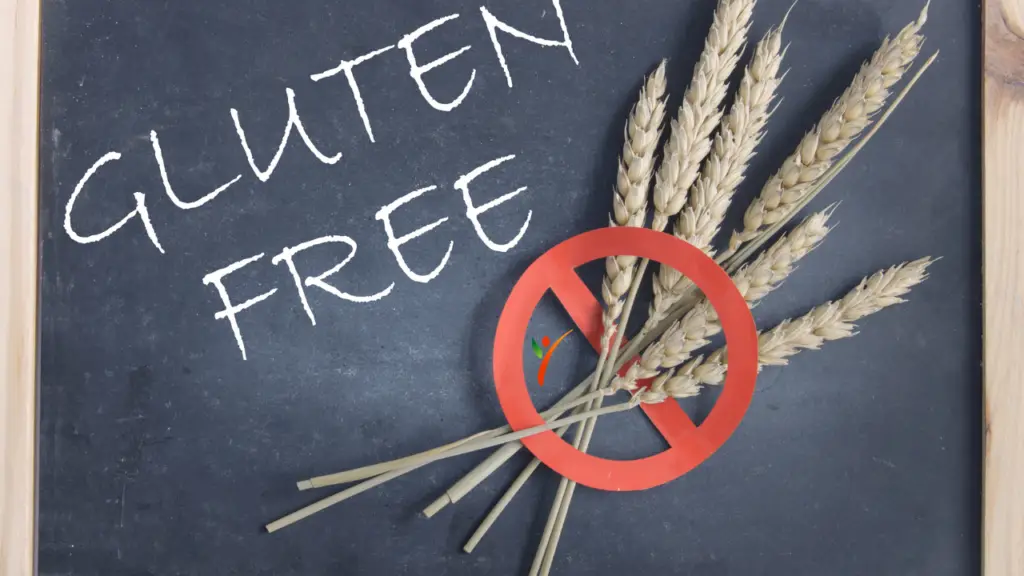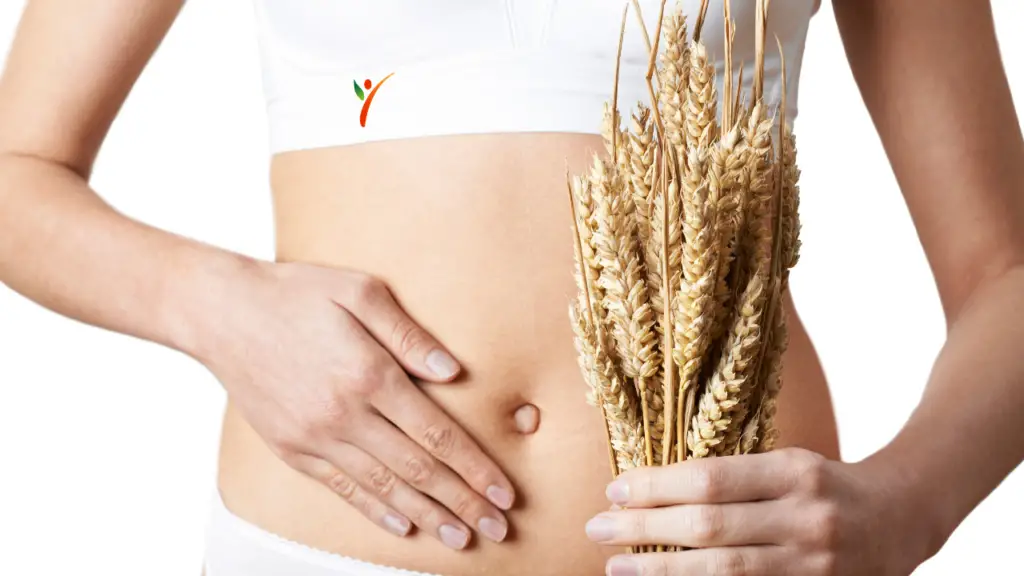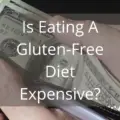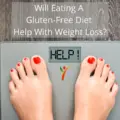New innovative diets are always being introduced to us. For instance, there is the keto diet, intermittent diet, paleo, vegan, low carb, and so many more! Some people intake just water for a week to detoxify their body.
The reason behind so many new diets that we see continually coming up is the unhealthy, preservative, and artificial flavors we consume every day, which harms our stomach and body. Eating a gluten-free diet cuts off the toxic food ingredients and makes our diet healthy and balanced to protect our health.
The two popular and frequently inter-changed diets are gluten-free diets and grain-free diet. These are two very different diets, yet people often get them mixed up considering they are closely connected.
This article will explain the difference between gluten-free and grain-free. Let's first talk about the gluten-free diet:
What Are Gluten And Gluten-Free?

As you may know, gluten is a protein found in wheat, oat, rye and barley, and other grains. Pasta and bread stay together by the “glue” we call gluten for easy understanding.
Although gluten may not seem unhealthy, some people react to its consumption. This allergy from gluten is called celiac disease or gluten sensitivity. Gluten is a protein, but it is not a mandated protein for one's body.
There is no rocket science in going gluten-free diet. Just start using gluten-free products, and voila, your gluten-free diet starts. Some people start a gluten-free diet on their own, while others start due to health issues.
An estimated two million Americans avoid gluten in America due to gluten sensitivity. And this is the reason gluten-free products are trendy these days. Technically this popularity began due to health issues.
Still, a gluten-free diet contributed to weight loss, so people went crazy over this benefit. Therefore, a gluten-free diet climbed the wall of fame. And this is how gluten-free products became a standard food item in grocery stores.
The main reasons behind the craze for a gluten-free diet were not substituting pasta or bread but leaving wheat.
Wheat increases weight significantly, and dropping wheat from the diet is the main reason for weight loss.
In the beginning, a gluten-free alternative was not readily available, people had to rely on naturally gluten-free products, but now there are many replacements. Today there is an alternative for all gluten items, from pasta to crackers. Every food has a gluten-free option available at the grocery store, it seems.
What Is Grain-Free?

Let's first discuss what grain is. Grains are seeds of grasses like corn, rice, wheat, barley, rye, etc. Doesn't it sound like an essential part of our daily diet and feel harmless too?
The grains are naturally full of nutrients and vitamins, but the grains we eat are mostly processed and refined. This refined food strips the grains leading to loss of all vitamins. So, the product we eat lacks 80% of iron and vitamins.
What we eat is non-nutritious food that is easy to digest. If it is easy to digest, then what is the issue? The issue is that refined grains are too easy to digest, leading to high blood sugar levels.
A significant spike in blood sugar can lead to fat storage, you'll be hungrier, and ultimately you will gain weight.
The reason people go grain-free because, with all the experience and study, it seems a grain-free diet prevents autoimmune diseases.
If a gluten-free diet is a species, then a grain-free diet is the genre. In the latter diet, people have to cut grains per se.
People who leave grains opt for cassava flour, almond flour, chickpea flour, etc. these products are low glycemic. The worst part is that these grain-free flours have significantly fewer nutrients.
The reason people go grain-free because one who chooses to go grain-free goes gluten-free too and corn-free.
A Grain-free diet's effect leads to leaving the inflammatory grains that affect and harm the intestine.
A grain-free diet provides relief to people suffering from gluten-sensitivity and celiac disease.
A few studies suggest that going gluten-free can prevent autoimmune disease. Various stores provide grain-free bars and pretzels that don't have dextrose or rice flour, or corn maltodextrin.

The Difference Between A Grain-Free Diet And A Gluten-Free Diet
Let's make one thing clear every grain-free diet is gluten-free, but it doesn't work the other way around.
Gluten products:
- Bread
- Bulgur wheat
- Cakes and pies
- Candies
- Cereals
- Communion wafers
- Porter
- Ale
Grain Products:
- Barley
- Brown rice
- Buckwheat
- Bulgur (cracked wheat)
- Millet
- Oatmeal
- Popcorn
What's The Difference Between A Grain-Free And A Gluten-Free Diet?
As mentioned before, gluten is a protein found in wheat, barley, rye. A gluten-free diet eliminates those food items or grain (wheat, barley) with gluten. Simultaneously, a grain-free diet removes grains per se, even those with no gluten in them. Following a grain-free diet is more complicated than following a gluten-free diet.
The nutritional council has segregated the grains into three categories:
- Gluten-free grains
- Grain with Gluten
- Gluten-free pseudocereals (buckwheat, quinoa, etc.)
So, grain-free covers a more significant area than gluten-free. Hence, the former is restrictive and more complex to follow.

Grain-Free Diet
Now when you jot down your grocery list, exclude all grains.
The grocery list won't even have grain-derived food like breakfast cereal or muesli or oatmeal, for that matter. Research says that going grain-free is challenging. You will think you need to eliminate quinoa and amaranth (the pseudocereals). Pseudocereals can be added to the diet as they are not technically grains.
If we look at the list of grain-free food items, it might seem low in carbs, but it is not mandatory as people can always increase carbs and fats by eating starchy vegetables, legumes, fruits, etc.
There is no other restriction in a grain-free diet other than eliminating grains. People following this diet are free to add fish, meat, nuts, seeds, sugar, and dairy.
Benefits Of A Grain-Free Diet And Gluten-Free Diet
People follow a grain-free diet to avoid grain and gain other benefits, as you will see below.
Helps Treat Certain Health Conditions
Let us take an example of celiac disease (it's an autoimmune disease). In America, 1% of the population suffers from autoimmune diseases.
You know that gluten is a protein widely found in wheat, but their bodies detect gluten as a threat for people suffering from such disease. Yes, their stomach mistakes gluten as harmful proteins and harms the intestine's lining. It leads to gut inflammation and other diseases.
So, people suffering from an autoimmune disease like celiac disease follow a gluten-free diet.
People also follow this diet because they have experienced eczema, diarrhea, or fatigue after eating grains or gluten products.
An exhaustive study wherein people with autoimmune disease and gluten-sensitivity or inflammatory bowel disease followed a grain-free diet. After six weeks, 70% of participants showed significant improvement in their health.

Reduces Inflammation
Do you know the root cause of autoimmune diseases?
Yes, inflammation. Studies show that grain or gluten products can cause inflammation in the stomach.
Refined grains may cause gut inflammation, but results would be different if one intakes whole grains.
Also, cutting off grains or gluten products depends on fruits and starchy vegetables to help you out with the inflammation issues.
Fun fact: Whole grains are anti-inflammatory

Contributes To Weight Loss
A grain-free diet can lead to significant weight loss. The reason is that when one leaves grain or gluten, and have automatically cut out all the pasta, pizza, cookies, or other goodies.
It drops a lot of calories from the daily diet. And this calorie deficit leads to weight loss. Research shows if you are successful in producing a calorie deficit in your diet, you will lose weight.
Some studies show weight loss occurs eating whole grains, which boosts metabolism.

Lowers Blood Sugar Levels
Grains have carbs in them. People who suffer from digesting carbs may have an issue with a diet rich in carbs and grains, especially diabetes.
Whole grains don't cause many problems, but refined grains are too easy to digest, causing a spike in blood sugar levels.
Cutting off grains means a low carb diet, which means lower sugar levels. But if one increases whole grain in their diet, they add much-needed fiber to their diet.
So, grains are good, but one needs to be conscious of the type of grain one adds to their diet.

Other Potential Benefits
Eating a grain-free diet may also offer other health benefits:
- Studies have shown significant improvement in mental health when one goes gluten-free. It does not apply to everybody but cutting off gluten means less inflammation, and the mind takes less stress. So, if you are suffering from anxiety, depression, ADHD, you might want to try going gluten-free.
- A gluten-free diet can reduce pelvic pain in women. And it also reduces gut inflammation in the stomach and can give relief to people suffering from a weak intestine.
- Some people have fibromyalgia, and going gluten-free will alleviate the pain.

Foods To Eat
Food to add to the diet, whether you follow a grain-free diet or gluten-free diet:
· Fruits: All-natural fruits are allowed as they neither are grains nor have gluten. But the canned or dried, or frozen fruits are a no if you are on a gluten-free diet, as they can have added gluten in them.
· Vegetables: All vegetables are naturally gluten-free, and people can eat them on a grain-free diet. They can be eaten raw or cooked. Starchy vegetables should be a must if you're on a diet as they balance out the vitamins you lose.
· Animal products: Irrespective of the diet you are following, you can always add meat, fish, seafood, and eggs to your diet. They are rich in proteins that will provide a balanced diet.
· Plants: Tofu, soy yogurt, soy milk, tempeh, and other plant-based products are grain-free.
· Pseudocereal: Quinoa, Amarnath, and buckwheat are few grains that you can add to the diet of a grain-free diet, and they are naturally gluten-free, so they are automatically a part of both diets.
· Seeds and nuts: All seeds and nuts are gluten-free, and you can eat them in a grain-free diet.
· Non-grain-based flour: Chickpea, red lentil, coconut flour are some of the non-grain flours allowed in a grain-free diet, and those who are gluten-free can be eaten in a gluten-free diet too.
Final Thoughts

The fundamental difference between gluten-free and grain-free is that the grain-free diet is more difficult as one leaves grains altogether.
But in a gluten-free diet, people need to be more conscious when following a gluten-free diet as gluten is in many products.
If someone is suffering from autoimmune disease, they should opt for either a grain-free diet or gluten-free diet and monitor their health for six to eight weeks.
If there is no significant improvement in your disease, you should consult a doctor or nutritionist for your treatment.






